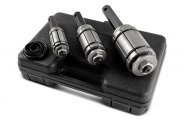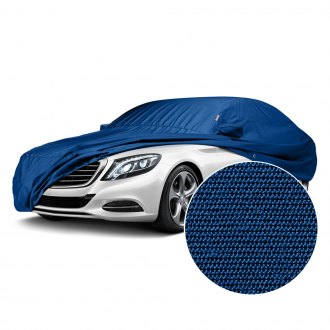American Motors Accessories & Parts
American Motors Parts
American Motors Wheels & Tires
American Motors Exterior Accessories
American Motors Automotive Lighting
American Motors Body Parts
American Motors Interior Accessories
American Motors Audio & Electronics
 Installation Parts
Installation Parts Antennas & Components
Antennas & Components Stereos
Stereos Speakers
Speakers Amplifiers
Amplifiers Subwoofers
Subwoofers Cameras & Driver Safety
Cameras & Driver Safety Alarms & Remote Start
Alarms & Remote Start CB Radios & Components
CB Radios & Components Mobile Phone Cables & Connectors
Mobile Phone Cables & Connectors Bluetooth
Bluetooth Equalizers & Processors
Equalizers & Processors Batteries & Power
Batteries & Power Video
Video Radar Detectors
Radar Detectors GPS Systems
GPS Systems Mounts & Chargers
Mounts & Chargers Action Cameras & Accessories
Action Cameras & Accessories
American Motors Automotive Tools
 Oil Change Tools
Oil Change Tools Engine Service Tools
Engine Service Tools Suspension & Steering Service Tools
Suspension & Steering Service Tools Transmission & Drivetrain Service Tools
Transmission & Drivetrain Service Tools Pullers & Installers
Pullers & Installers Cooling System Service Tools
Cooling System Service Tools Lockout Kits
Lockout Kits Repair Manuals
Repair Manuals Spark Plug & Ignition Tools
Spark Plug & Ignition Tools Wheel & Tire Service Tools
Wheel & Tire Service Tools Brake Service Tools
Brake Service Tools Fuel System Service
Fuel System Service A/C Tools & Equipment
A/C Tools & Equipment Electrical System Tools
Electrical System Tools Diagnostic & Testing Tools
Diagnostic & Testing Tools Exhaust System Service Tools
Exhaust System Service Tools Auto Glass Tools
Auto Glass Tools Jacks
Jacks Automotive Lifts & Stands
Automotive Lifts & Stands Automotive Paint
Automotive Paint EV Charging
EV Charging Battery Chargers & Jump Starters
Battery Chargers & Jump Starters Dollies & Movers
Dollies & Movers Creepers
Creepers Auto Detailing
Auto Detailing Key Cutting Machines
Key Cutting Machines Dent Repair Tools
Dent Repair Tools Service Carts
Service Carts Vehicle & Parts Protection
Vehicle & Parts Protection
In the early 1950s, independent automakers like Nash, Hudson, Packard and Studebaker were worried that they’d be driven out of business by the “Big 3” – General Motors, Ford, and Chrysler. Because of their size, GM, Ford, and Chrysler enjoyed immense production cost advantages, and they were able to further reduce costs by sharing parts between divisions and platforms. These economies of scale enabled them to provide deep discounts and engage in market share wars, as Ford and GM did in 1953-54, which resulted in low car prices that the independents couldn’t match. George Mason, the CEO of Nash-Kelvinator, realized that combining forces was the only way that the independent manufacturers would be able to compete, and he engineered the merger of his company and Hudson in May of 1954 to form American Motors Corporation (AMC). Mason tried to bring Packard and Studebaker into the fold, but was only able to secure a parts sharing agreement between AMC and Packard before he died, just a few months after the merger. Packard did end up acquiring Studebaker, but we can only speculate at how successful AMC might have been had all four companies joined together.
Nevertheless, during its three and a half decade existence, AMC produced many unique and memorable cars, from economical gas sippers to powerful and exciting performance models, off-road adventure vehicles to luxurious cruisers, and the company was responsible for a long list of automotive firsts. But that was all in the future when George Romney, future governor of Michigan and father of 2012 Republican presidential candidate Mitt, succeeded George Mason as CEO. One of the first moves was to consolidate Nash and Hudson production at Nash’s Kenosha Wisconsin manufacturing plant. Increased purchasing power and reduced production costs due to the merger created positive results almost immediately, allowing Hudson to cut prices and enabling the company to post a profit in 1955. Initially, the two companies’ respective names and models were retained – the Hudson Wasp and Hornet and the Nash Ambassador, Statesman, Rambler and Metropolitan, and there was some rebadging which resulted in cars like the Hudson Rambler and Hudson Metropolitan, but the decision was made to discontinue the Hudson and Nash brands after 1957 and elevate Rambler from model to brand name.
George Romney concluded that the best way to compete with the Big 3 was with a smaller-sized car line that emphasized fuel efficiency. The Nash Rambler became the Rambler American, and this compact was joined by the intermediate Rambler Six and Rebel V8, and the top of the line Ambassador. But every new Rambler wasn’t only about economy. The parts sharing agreement between AMC and Studebaker-Packard Corporation (S-P) had not worked out, because although AMC had purchased Packard V8 engines and automatic transmissions for the Nash Ambassador and Hudson Hornet, S-P did not reciprocate in kind, so the agreement was terminated. But all this did was spur AMC to develop its own V8 engine. A 250 c.i. V8 debuted in 1956 that was rated at 190 hp, and a larger 327 c.i. version rated at 255 hp was installed in the new lightweight Rebel in 1957, along with a 4-barrel carburetor, 4-speed manual or automatic transmission and dual exhaust. This combination produced a 7.5 second 0-60 mph time, second only to the Chevrolet Corvette among 1957 production vehicles. Bendix “Electrojector” electronic fuel injection, which would have bumped horsepower to 288, was supposed to be an option, but it proved to be troublesome and none were ever sold.
AMC’s commitment to economical small cars proved to be a winning strategy, resulting in a 3rd place sales ranking in 1960 and 61. In the early 60s the company offered a number of industry firsts, including a tandem master cylinder in 1962, the now familiar PRNDL shift indicator with neutral between drive and reverse, reclining front seats in the 1964 Classic, with disc brakes optional on that model a year later. Small car champion George Romney resigned to run for governor in 1962 and he was replaced with Roy Abernathy who believed that the company should build larger, more expensive cars as well. The Ambassador was enlarged, and the fastback Marlin, which was originally based on the Classic, was moved to the larger Ambassador chassis. The Rambler brand was gradually phased out during the 60s and replaced by American Motors or just AMC badging. This was the era of the muscle car and AMC had viable competitors to the Big 3’s offerings with the Javelin and its 2-seat derivative the AMX, available with big 343 c.i. and 390 c.i. V8s, and the 1969 Hurst SC/Rambler, which featured the big 390 V8 from the AMX in a compact Rambler American based chassis with a host of suspension and drivetrain upgrades. The SC stood for Super Car, but these cars were commonly called “Scramblers”, and could run low 14 second quarter mile times right from the factory, and much faster times with simple modifications.
In 1970 AMC purchased Kaiser-Jeep Corporation, adding the Jeep CJ, Wagoneer, pickup, and other vehicles to the AMC lineup. The compact Hornet debuted the same year, replacing the Rambler American, along with the subcompact Gremlin, which was built on the same platform. The Matador replaced the Rebel the following year, and the Ambassador was redesigned and made even larger in 1973. However, higher gas prices and rationing caused by the 1973 Arab oil embargo shrunk the market for large cars and the Ambassador was discontinued the following year. The most memorable AMC model from the 70s was the Pacer, a compact car that was as wide as a full size car. The Pacer was designed to have the roominess of a large car wrapped in a smaller, aerodynamic package, and its rounded shape featured a large glass area. The Pacer was ahead of its time in many ways but its styling was controversial. And although it was a compact car, it was heavy and suffered poor gas mileage compared with its competition at a time when fuel economy was the most important consideration for many buyers.
By the close of the 1970s production of all AMC large cars ended and, aside from Jeep, the company was once again a small car manufacturer. The Hornet was redesigned and rebadged as the Concord, and the Spirit replaced the Gremlin. A 4WD version of the Spirit and Concord was also offered called the Eagle. However, AMC’s main competitors were no longer the Big 3 but Japanese manufacturers like Honda and Toyota, and the company’s small cars did not compare well with the imported competition. The ensuing financial problems led them to make an agreement with Renault. The French automaker initially acquired a 22.5% stake in AMC in 1979, which later rose to 49%, and the two companies also agreed to develop products jointly, resulting in the 1983 Renault Alliance sedan and Encore hatchback. In the early 1980s Jeep introduced the compact Cherokee and Wagoneer, literally inventing the market segment that would become known as Sport Utility Vehicles (SUVs).
In 1985 Chrysler was having trouble meeting the demand for some of its vehicles, and contracted with AMC to build cars at the Kenosha, Wisconsin plant. Two years later, Renault was experiencing its own financial difficulties and sold its shares of stock to Chrysler, which also purchased all the remaining shares of AMC. In the deal, Chrysler acquired two new models that had been developed by Renault and AMC, the Premier and Medallion. Chrysler marketed these and later models including the Summit, Talon, and Vision under the Eagle brand, which was derived from the last AMC designed vehicle, until the brand was discontinued in 1999. But Jeep was the prize that Chrysler captured when it bought AMC. Along with the highly successful Cherokee and the new Wrangler YJ, a modernized replacement for the venerable CJ, Chrysler gained the Grand Cherokee, which was then under development by Jeep. All three models have been highly profitable for Chrysler and the Jeep brand has spawned many other models including the Compass, Liberty, Patriot and Renegade.
AMC built millions of cars, trucks, and SUVs during its 34 years existence and many are still on the road and driven regularly. You may have a trusty Jeep CJ or Cherokee that you want to keep running, an AMX, Javelin, or Rebel muscle car that you want to modify, or a perfectly restored classic Ambassador that just needs to be cared for. For these and all your service requirements you can depend on us to have all of your AMC needs, including maintenance supplies, repair parts, appearance products, and custom and performance accessories.
Dress your vehicle up. Keep it running at its peak or unleash its hidden power. Make it look like it just rolled off the show room floor. Take care of it and maintain it. You name it, we've got it. We have gathered everything you need to make your American Motors perfect both inside and out. CARiD's job is to meet your every expectation and provide you with quality and durable accessories and parts designed with excellence in mind. Whether you're after luxurious style, brisk performance, or anything in between, our wide assortment covers all the bases.
Featured Products
Popular Products
-
 $61.27 - $1,767.67
$61.27 - $1,767.67 -
 $1.95 - $39.95
$1.95 - $39.95 -
 $2.69 - $6.23
$2.69 - $6.23 -


















